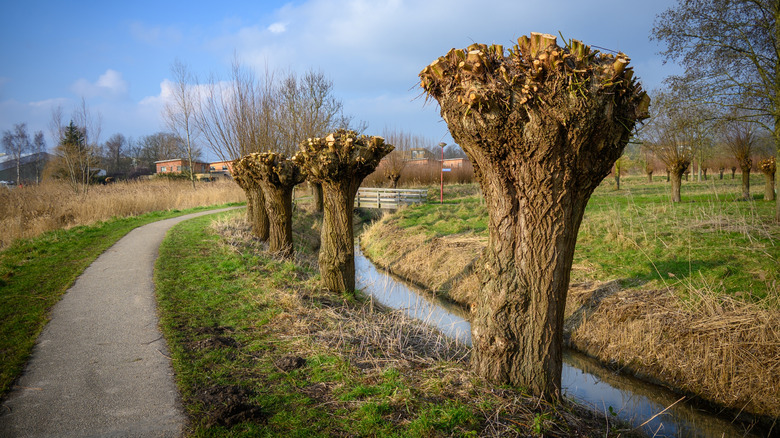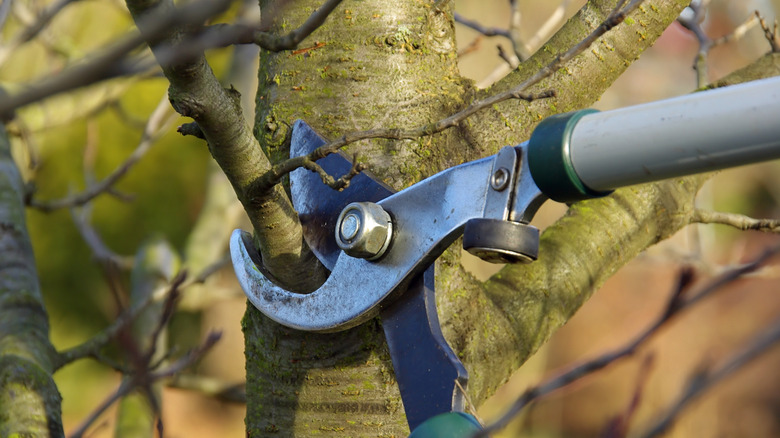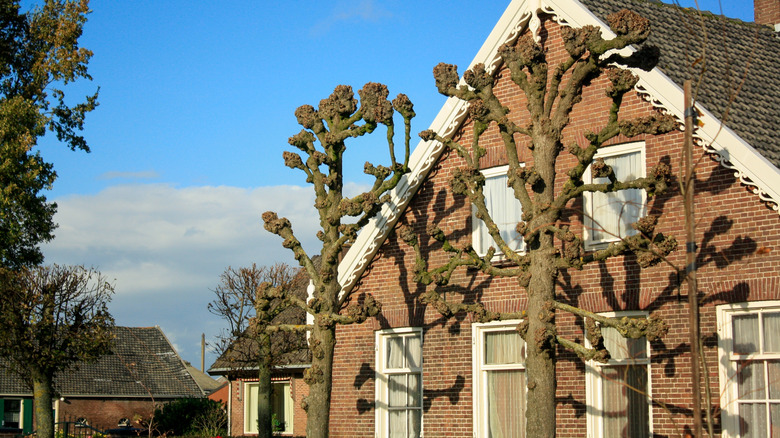What Does It Mean When A Tree Has Its Branches Cut Back To The Trunk?
If you enjoy strolling your neighborhood and admiring the natural environment around you, then you may have come across the occasional tree with its branches trimmed all the way back to the trunk. While in some cases, this may simply be the first part of a full tree removal, at other times this is actually a distinctive pruning technique called pollarding. As it goes, pollarding is a strategy for keeping a tree smaller than its natural size.
Pollarding is an especially common practice for trees that are growing in public spaces or near power lines, where their full height might cause problems. In many cases, this technique can keep trees that otherwise could reach 90 feet or more to a far more manageable 30 feet.
This pruning technique isn't for the faint of heart, though. It requires starting when the tree is young and diligently cutting it back each year. Plus, it might not be a good idea to prune every type of tree this way. Here's what to know about pollarding, and if it'd be a good choice for any of the trees growing in your yard.
Can you pollard any tree?
Sadly, not every tree responds well to pollarding. Not only is it important to start the practice when the tree is still a sapling, but it's also best to only attempt it on trees with strong wood that isn't likely to break and split. Poplars, willows, and varieties of beech trees are especially prone to damage if they are pollarded.
While pollarding doesn't necessarily damage all trees, it can be harmful and increase the trees' risk for pests and disease if it's done poorly or attempted on older trees. When done well, however, it can be beneficial for trees, as it helps to prevent overly heavy branches and weight imbalances. Pollarding crepe myrtle trees is especially controversial, with many people referring to this aggressive pruning style as "crepe murder" and is often unnecessary.
The practice of pollarding tends to give trees an odd appearance during the dormant season, with knobby nubs where branches otherwise would be. If you don't care for the look of pollarding or hard pruning, then it's especially important to do your research before planting trees so you can make sure they won't outgrow their space. Otherwise, your only options may be to either pollard or transplant the tree.
How to pollard a tree
If you have a young tree that is a good candidate for pollarding, then begin by deciding the size and shape you want to maintain the tree at. Then, during the winter when the tree is dormant, cut it to your desired shape. You shouldn't be taking away more than two or three years worth of growth. Cut most of the branches back to within a few inches of the trunk. You can also leave a few sturdy branches a bit longer if you want.
The tree will continue to grow sprouts from the cut branches each spring. Once it goes dormant again in the colder seasons, repeat the process: prune it back to just above those original cuts. Over the years, the distinctive knobs that pollarded trees are known for will form. These are called pollard heads. With this method, you can keep your tree at a manageable height indefinitely, while also potentially creating a natural and unique work of art.


